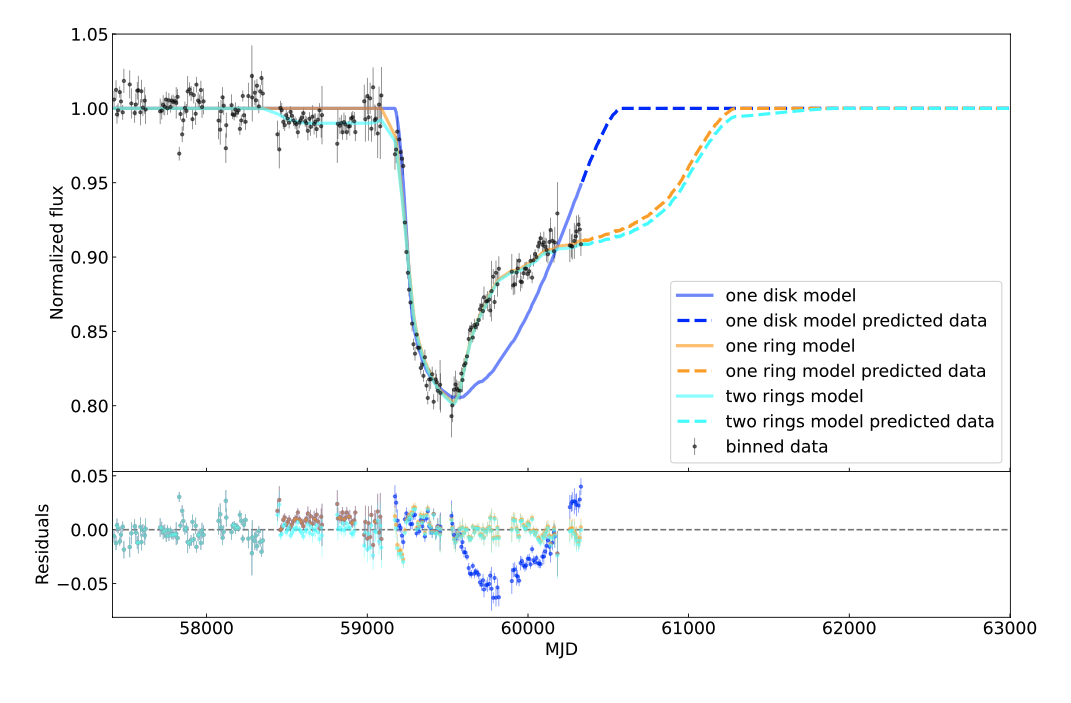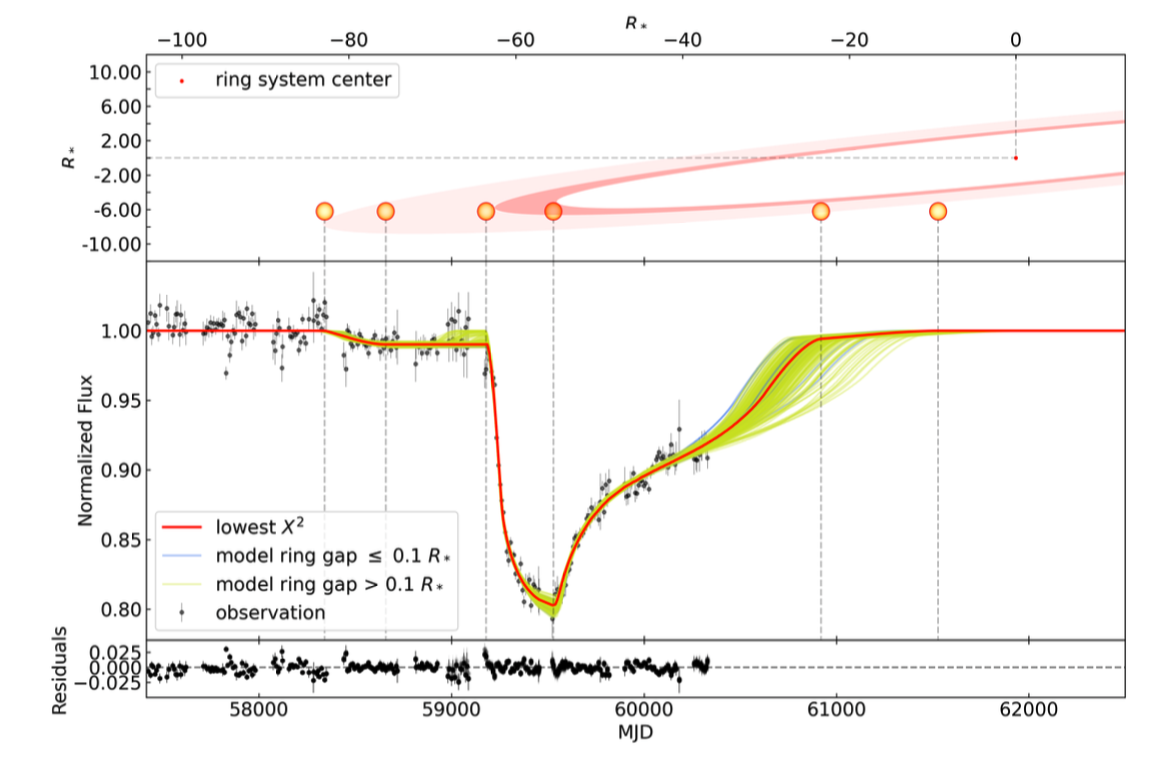Student paper day! I’ve been looking at the light curves that the ASAS-SN survey releases on their transients page - these are light curves that show curious dimmings caused by stellar variability or by something moving in front of the star. One of these light curves, named ASASSN-21js, showed a sudden dimming in 2021, and over the past three years, has faded and then brightened up again. Theo worked on analyzing this light curve with me as a Masters thesis project here in Leiden: after some experimentation, the light curve is exactly matched by a highly tilted and inclined disk with two rings with different transmissions. What’s particularly impressive is that the residuals after the model fit are consistent with noise. This model explains the data almost perfectly.
Using a MCMC fitting package, he was able to determine the confidence intervals on the parameters, with the outermost ring about 1.12 au in radius. Due to the geometry of the eclipse, we only see these two rings - there may be more material interior to this radius, but the star’s motion will not reveal this. What’s more amazing is that the eclipse is still ongoing, finishing only in May 2027!
Okay, so what are the challenges here? First, the star itself is very large star with a mass of 4.5 times that of the Sun. Those are relatively rare, but are seen long distances across the Galaxy. Second, the transverse velocity is less than one kilometre per second! If this is orbiting around this star, then it’s at a distance of over 13000 au from the star! Deep into Oort Cloud territory. This means that the chance of seeing such an eclipse is tiny, around one in ten thousand for all the solar type stars in the ASAS-SN survey size and duration. That’s an uncomfortable problem and we don’t know the answer as to why we’re seeing this now.
What’s tantalizing is that the MCMC fitting also found solutions with a cleared ring gap between the two main rings (squint at around 59200 days to see this additional gap in the rings). It’s compelling, but not confirmed. There is also multi band data coming in as well, so in future research we can see if the material is sub-micron sized or not. More of these unusual systems are being discovered in ASAS-SN, and with other large survey telescopes coming online soon (think the Vera C. Rubin Observatory) many more of these systems might be discovered. Watch this space!
The paper is published in A&A as ASASSN-21js: A multi-year transit of a ringed disc by Pramono, Kenworthy and van Boekel. #astrodon 🔭🪐

